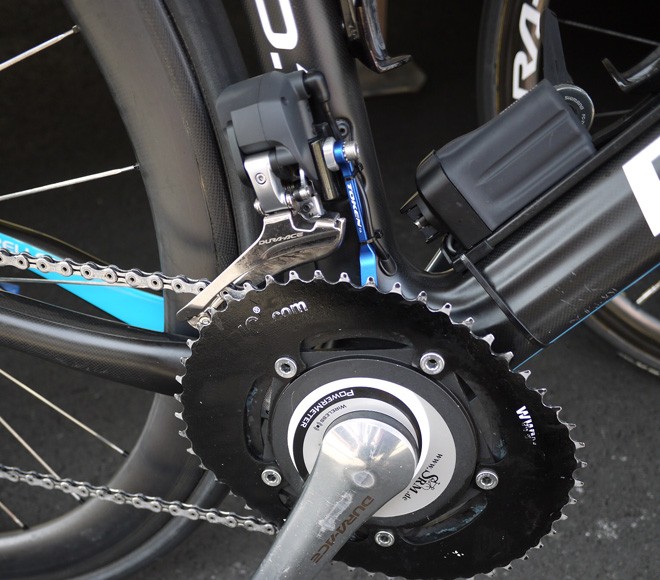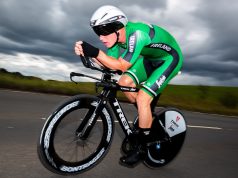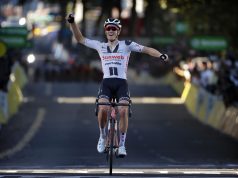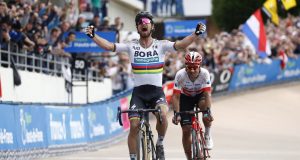Pedalling like Chris Froome or Alberto Contador might seem appealing, but Oxford University researchers have found that for most of us it’s likely to reduce rather than improve our performance.
A team from Oxford’s Nuffield Department of Clinical Neurosciences looked at a common measure of aerobic fitness called VO2 max. While it can be measured accurately in a laboratory, it is often more practical to use techniques that estimate VO2 max for individuals by getting them to exercise to their maximal level. These include the ‘bleep test’ of shuttle runs used by police forces and the Royal Air Force among others, or tests using a cycle ergometer, also known as an ‘exercise bike’.
The current calculation for a cycle ergometer is based on body mass in kilograms and work rate in Watts, but the Oxford team wanted to see if including the rate of pedalling, called ‘cadence’, would give a more accurate result, not only for VO2 max but especially for people who, often for health reasons like heart failure, cannot exercise to their maximal level. For these people, measurements have to be based on exercise carried out below the maximum level, making their result more of an estimate. Ensuring that estimate is as accurate as possible can be vital in developing appropriate health and fitness programmes for them.
Dr Federico Formenti led the research. He explained: ‘We used ten healthy men aged between 19 and 48. We measured the participants’ energy consumption at different cadences and exercise intensities, and used video-based motion analysis to study the mechanical determinants of changes in the energy cost.’
Professional cyclists pedal at a very high cadence, often above 100 revolutions per minute, for improved efficiency, and they can sustain very high exercise intensity for a long period of time. But Dr Formenti and his colleagues found that this was less effective for recreational cyclists.
VIDEO:Chris Froome High Cadence Style Cycling Zone 4 Threshold
Dr Formenti said: ‘We used mathematical models to show the degree to which energy required to spin the legs increases with cadence. At a low exercise intensity of 50 Watts, a recreational cyclist trying to pedal like a professional at 110 revolutions per minute will use more than 60% of their power just to spin their legs. Only 40% is going into overcoming the cycling resistance. To translate that to cycling on the road – only 40% of the energy you burn would be going into moving the bike forward.
‘Recreational cyclists want to pedal efficiently, just like the professionals do, but achieving that means pedalling differently from the professionals. Pedalling faster might work for Tour de France winners but it probably won’t work for the rest of us. At low exercise intensity, increasing cadence mostly results in a less effective stroke, reducing efficiency.’
Using the results of this study and other published results, Dr Formenti and colleagues have proposed a new and more accurate equation for estimating energy consumption on stationary cycle ergometers, using cadence as well as weight and exercise power.
Source: Oxford University










John Brady
It just means healthy males between 19-48 haven’t trained to race bicycles!
If your pedalling at 100rpm and generating only 50watts of course it will be inefficient. There would be nothing to resist the force you applied resulting in you bouncing in the saddle etc. Most of the stress on your system would come from holding yourself still on the bike. If you moved the resistance to even 100watts the efficiency would improve greatly. You just have to look at a quadratic analysis of force velocity against heart rate to find someone’s ideal pedal rate. A very simple test for this is (if using a power meter). Ride at a set wattage. Say 150watts for 10mins in self selected cadence. Note heart rate and cadence. Ride easy or rest for 10mins. Repeat the above only this time ride 10rpm less than first one. Again rest for 10mins before repeating at 10rpm over the self selected cadence. You should look for the cadence that you were able to hold the wattage but had the lowest heart rate.
This will show what cadence is most efficient for you at this time. That said it doesn’t mean that with training you couldn’t change what cadence is most efficient (costs you the least).
That’s good thinking Gary Mckeegan. I laugh when people always assume 90rpm + is a good cadence. It’s as individual as your fingerprint.
Higher rev cadences also have a higher demand on the o2 transport system. That’s why the pros are good at it, and that’s before we consider o2 vector drugs.